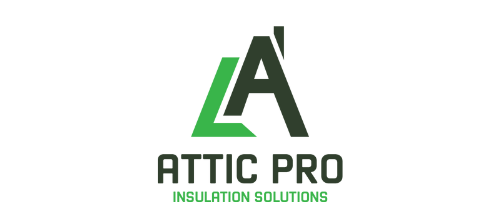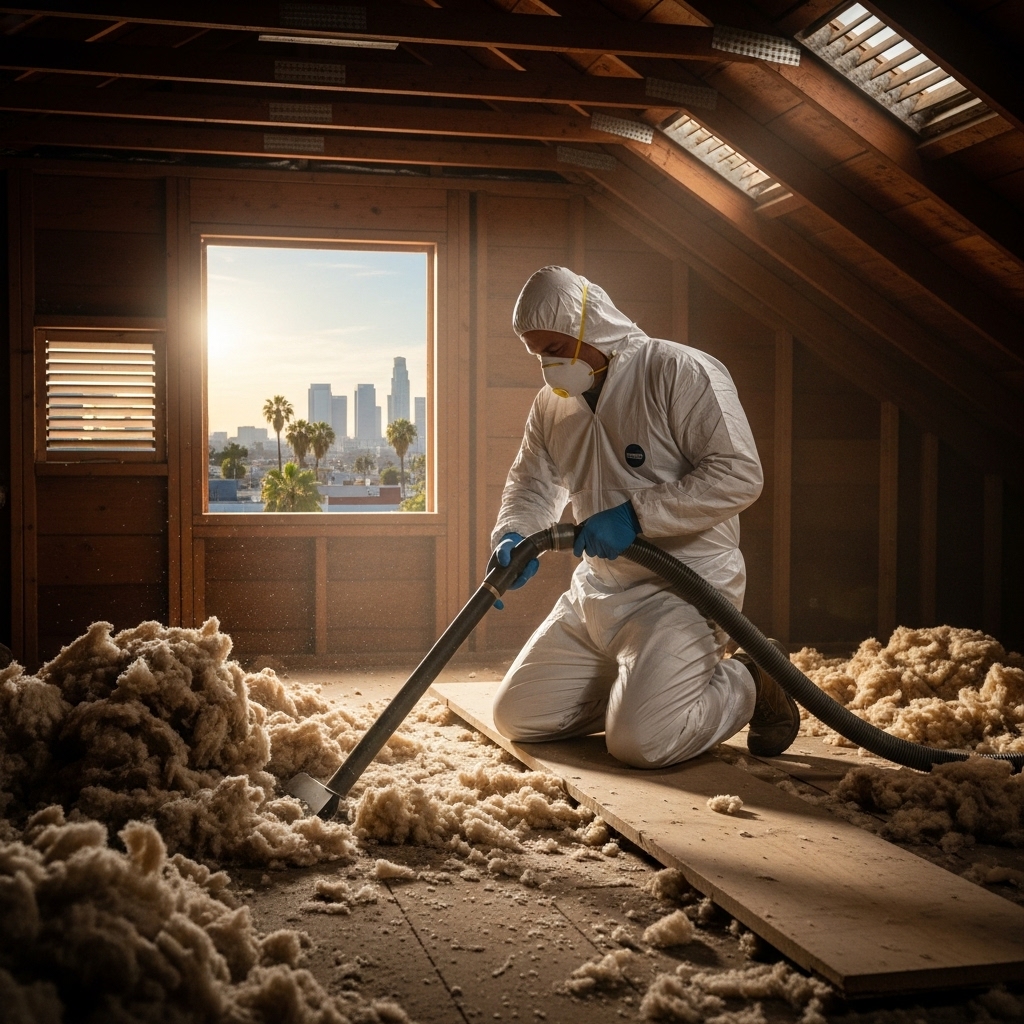Living Well in Los Angeles Starts With a Cleaner, Safer Home
Ask any longtime Angeleno about home comfort and you will hear stories about breezy mornings, marine layer afternoons, and the small but persistent challenges that come with living in a vibrant, year-round city. Among those challenges, rodent activity can become a quiet intruder, especially when attics, crawl spaces, and garages offer shelter from heat waves or sudden winter rains. Effective cleaning after an infestation is not simply “tidying up.” In Los Angeles homes, true sanitation is a health-forward, building-smart process that restores indoor quality, removes contamination at the source, and closes off pathways that brought pests in the first place. Done the right way, it is a reset for your living space and peace of mind. Many homeowners first hear the term rodent sanitation when a technician points to stained insulation or droppings along a framing member. But what it really means is the difference between living with uncertainty and living with certainty that your home is safe.
When I walk into a Los Angeles bungalow in Atwater Village, a hillside home in Silver Lake, or a family house in the Valley, I look for telltale signs that go beyond simple pest activity. I look for the way dust, allergens, and odors have traveled, the way temperature shifts show up in ventilation, and the way tiny openings around utility penetrations create invisible highways. That attention is the foundation of a sanitation plan. It is how we move from cleaning up a mess to upgrading the well-being of the home. In a city where we spend time entertaining on patios, cooking late into the evening, and opening windows to catch cool air, those subtle improvements pay off daily.
The Health Advantages of True Sanitation
Rodents do not just leave behind droppings; they deposit oils, urine crystals, and nesting materials that capture dust and moisture. In Los Angeles, where dry summers and occasional Santa Ana winds stir up particulates, those residues can turn into airborne irritants. By removing soiled insulation, HEPA-vacuuming surfaces, and disinfecting properly, we reduce the load of allergens and pathogens that may contribute to respiratory discomfort. Families dealing with asthma often report a noticeable improvement after thorough sanitation, not only because contaminants are removed but because odor sources are eliminated and air pathways get sealed, preventing future spread. The difference between a light sweep and a comprehensive sanitation shows up in your sinuses, sleep, and mood.
There is also a mental health benefit that rarely gets discussed. Living with a persistent smell or the knowledge of contamination in your attic weighs on people. It changes how you feel about your home, and it can make you hesitate to host family or to open a closet door you have been avoiding. The process of restoring that space—of reclaiming square footage emotionally, even if you never step into the attic—has real value. Therapy for the home, you might call it, and the results are tangible every time you inhale and do not notice anything but clean, neutral air.
Food Safety, Kitchens, and Daily Routines
Sanitation touches the heart of every home: the kitchen. Many Los Angeles houses have semi-open layouts that feed cooking aromas into living spaces. If rodents have passed through ceiling voids or base cavities, they may have left behind trails that intersect with venting shafts or under-sink voids. Professional sanitation is the bridge between stopping activity and ensuring your food prep zones are protected. It is not about the products used in the kitchen itself as much as it is about removing contamination upstream, then sealing it from re-entering the air you breathe or the shelves where you store ingredients. With that upstream approach, your nightly dinner routine becomes easier, calmer, and safer.
Protecting Your Home’s Structure and Value
Homes in Los Angeles vary wildly: 1920s craftsman bungalows, mid-century ranches, Spanish revivals, and modern architectural gems. Each style has its own vulnerabilities. In older homes, you see gaps where framing and stucco meet, or where original vents have aged beyond their prime. In newer homes, the challenge is often penetrations for solar upgrades and HVAC retrofits. Sanitation that includes exclusion—sealing entry points, replacing damaged insulation, and reconditioning the space—helps protect the integrity of those distinctive structures. That work does more than make the attic look good; it preserves the thermal envelope, reduces pest pressure, and supports energy efficiency by making your heating and cooling systems’ jobs easier. Over the long term, it is one of the smartest upgrades you can make.
Another often overlooked advantage is documentation. After a comprehensive sanitation, homeowners receive a record of what was removed and what was installed. If you are planning to sell or refinance, that paper trail is assurance to appraisers and buyers that the home has been responsibly maintained. It is difficult to put a price on peace of mind, but it is easy to see how confidence grows when the unseen parts of the house are as cared for as the visible ones.
The Los Angeles Climate Factor
In this region, microclimates rule. The coastal breeze in Santa Monica is nothing like a mid-afternoon in North Hollywood. What does that mean for sanitation? Heat amplifies odor release from contaminated materials, and damp winters can keep residues sticky and odorous longer. Attic spaces can swing from hot to cool within hours, pushing air through tiny cracks and into living areas. By performing sanitation with attention to sealing gaps, refreshing insulation, and rebalancing air movement, you stabilize those fluctuations. Many homeowners report that rooms feel more temperate after a thorough job, and while sanitation is not insulation in itself, the two are closely linked because the job often includes replacing fouled insulation with clean material.
Because our winters are relatively mild, rodent activity can remain steady year-round, with a surge after the first rains when food and shelter patterns change. That is why waiting rarely helps. The earlier you tackle contamination, the less entrenched odors and residues become. Addressing the problem promptly also shortens the time to return to normal routines, and for households with children or pets, those weeks matter.
What Comprehensive Sanitation Looks Like
Homeowners sometimes ask what happens between the first inspection and the final walkthrough. The process begins with containment, so that any dust created during removal stays where it should. Soiled insulation and debris are bagged, surfaces are HEPA-vacuumed to capture fine particulates, and disinfectant is applied in a way that reaches into tight angles around joists and duct chases. Where odors have settled into wood, targeted deodorization helps neutralize them rather than masking them. Finally, exclusion work tightens up the home, from attic vents to gaps around plumbing and electrical lines. When re-insulation is called for, the new layer restores both cleanliness and thermal performance. In short, it is a combination of hygiene, building science, and craftsmanship—one that delivers results you can feel by the second week after service.
Some families worry about safety during the process. A qualified team uses products and methods designed for occupied homes, with ventilation strategies that keep your living areas protected. It is also wise to coordinate the appointment around your daily schedule to reduce disruption. When the work is complete, the space is left clean, sealed, and verified—a status that turns unknowns into knowns. About midway through the journey from discovery to relief, many homeowners decide to learn a bit more about specialized rodent sanitation so they can understand how each step contributes to the final outcome.
Why DIY Often Falls Short
We are a city of makers and do-it-yourselfers, and there is plenty a homeowner can do, from improving food storage to trimming vegetation near structures. But when it comes to contamination in attics and crawl spaces, most DIY efforts miss hidden cavities and fail to control dust properly. Without HEPA filtration, you can distribute contaminants into the air rather than removing them. Without exclusion, you can clean one day and confront a new mess the next. The best approach blends your preventative habits—like closing gaps around doors and keeping pet food sealed—with professional sanitation that reaches the places you cannot see or safely access. That partnership is where lasting results come from.
Neighborhood Nuances and Building Age
Every neighborhood offers clues. In hillside areas like Echo Park and Mount Washington, you often find narrow attic cavities and older roof vents that invite persistent traffic. In the Valley, scorching summer heat can multiply odors and push them downward. On the Westside, salt air and moisture may affect the lifespan of vent screens and caulks. A good sanitation plan respects those differences, using materials and sealing techniques suited to the particular home. Over time, that tailored approach creates a quieter, cleaner interior—a space that feels like a refuge from the city rather than a battlefield with it.
Living With Confidence After Sanitation
The best sign that sanitation has succeeded is not a report; it is how natural your routines feel a month later. You put away groceries without thinking twice. You open the closet with zero apprehension. You climb into bed and notice that the house smells like nothing at all, which is exactly what you want. When visitors comment on how fresh the air is, you realize the work has changed daily life in subtle but profound ways. Maintenance becomes simple: good storage, timely yard care, quick attention to any new gnaw marks or droppings, and occasional professional checkups. With those habits, the benefits of sanitation compound year over year, and the home feels more like the sanctuary it was meant to be.
Frequently Asked Questions
How long does a thorough sanitation typically take in a Los Angeles home? Most single-family homes can be completed in a day, though larger or heavily contaminated spaces may require additional time. The exact schedule depends on access points, insulation volume, and how much exclusion is needed.
Is it safe to stay home during the process? In many cases, yes. Professionals set up containment and ventilation to keep living areas comfortable. If you have sensitivity to odors or dust, stepping out for a few hours during the heaviest removal stage can make the day easier.
Will sanitation eliminate all odors? It dramatically reduces and often fully resolves them. The key is removing the source material, treating affected surfaces, and sealing pathways. Masking agents alone are not effective, which is why source removal and deodorization are paired together.
Do I need new insulation afterward? If insulation has been contaminated, replacement is recommended. Fresh insulation restores cleanliness and helps stabilize indoor temperatures, supporting both comfort and energy efficiency.
What should I do to maintain results? Focus on simple habits: keep pantry items sealed, manage yard vegetation, inspect pet doors and vents, and schedule periodic exterior checks for new gaps. Quick response prevents small problems from growing.
Ready to Protect Your Home
If you have noticed droppings, unexplained odors, or insulation that looks worse for wear, now is the moment to act. A comprehensive plan will clean what is contaminated, seal what is vulnerable, and restore the quiet confidence you deserve in your space. For guidance, scheduling, or simply to understand your options, reach out to a trusted local team and take the first step with professional rodent sanitation. Your Los Angeles home can feel fresh, safe, and welcoming again—starting today.

